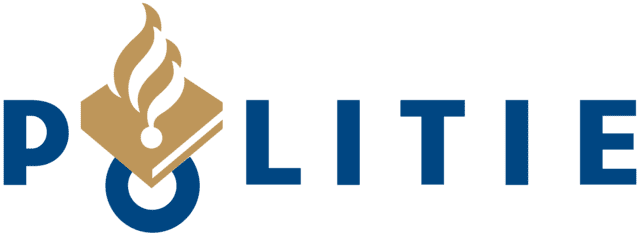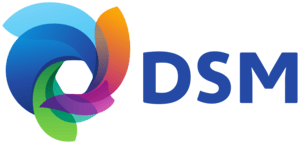Three weeks ago, we began by sharing our observation: many organisations want to become more inclusive, but they just can’t seem to make it happen. Now, after exploring anchoring, application and measuring, it’s time to show you how to increase your chances of success for an effective D&I policy (and practice!).
The problem with puzzle pieces
Imagine this: you receive a box of puzzle pieces. No picture on the box, no instructions. You start out full of enthusiasm, but after a while you give up. Too complex, too many separate pieces, no clue how it should look.
That’s how D&I feels for many organisations. A training course here, an ambassador there, a study somewhere else. All valuable, but how does it all fit together?
The buy-in model is the picture on the box. It shows how anchoring, application and measuring form a whole. No more separate projects, but a coherent system.
The Buy-in Model
Anchoring creates the preconditions: ownership by leadership, employee engagement, and structural resources. Without this foundation, D&I remains a project alongside daily operations.
Application translates ambitions into behaviour: concrete tools, skills and routines that help teams work more inclusively. And all that at the right time, for the right group.
Measuring & adjusting makes progress visible and provides direction: data on what works, feedback from employees, and systematic evaluation. Without measurement, you navigate on assumptions.
The inclusion bus
Anchoring is the moment when you, as an organisation, decide: we are going somewhere, together, and this is why it is important. You choose a sturdy vehicle, arrange for a driver (leadership), stock up on fuel (resources & mandate), and everyone consciously gets in.
Application is what happens along the way. You learn how to use the tools: navigation, gear shifting, steering. Some tools you buy ready-made, others you develop yourself along the way. Sometimes someone learns a smarter route or comes up with a new action or manoeuvre (and shares it with the rest). At some point, everyone knows their role. Someone helps with boarding, another reads the map, and yet another suggests taking a break. The bus starts to run on routine and it feels like progress.
Measuring and adjusting are the checks along the way. You don’t just check whether the bus is still running, but also:
- Are we still on the right route?
- Are the tools still doing what they are supposed to do?
- What do the passengers notice along the way?
- And on a very long journey, you even schedule the MOT in advance.
How the three cornerstones reinforce one another
The beauty of it all is: once you see the connection, everything becomes more logical.
- Anchoring without application is like a bus without a driver. Everyone is on board, it looks good, but you’re not getting anywhere.
- Application without measurement is like driving without a dashboard. You feel like you’re on the road, but you don’t know how fast you’re going, in which direction, or whether you have enough fuel.
- Measuring without anchoring is like MOT testing a bus with no destination. You know what’s technically wrong, but no one knows why we’re driving or where we’re going.
But when all three are in place, something special happens: the bus runs smoothly. People take responsibility, adapt tools and take new passengers with them. Diversity and inclusion are no longer a project, but a way of travelling.
Where do you start tomorrow?
Waiting for the perfect moment does not work. Here are concrete steps for each cornerstone:
Strengthen anchoring:
- Start small: structurally put D&I on the agenda in existing meetings.
- Spread ownership: Create a small group of enthusiasts or interested parties who will become the driving force. Is your organisation a bit further along already? Then it may be useful to train them to achieve concrete results more effectively and quickly (for instance, through a D&I ambassador programme).
- Use your budget wisely: Try to claim a special D&I budget. If that doesn’t work, integrate D&I into existing funds and budgets.
Improve application:
- Create tools together: Let teams identify their own inclusion challenges and come up with solutions. They will use what they themselves create.
- Start with practical training and begin with the management.
Start measuring and adjusting:
- Use what you have: Check existing employee surveys for inclusion indicators. That data is often already available. If not, go and arrange for it to be collected.
- Ask follow-up questions: ‘Do you feel welcome?’ is too abstract. ‘Do you feel comfortable expressing a different opinion in meetings?’ provides insight.
Most importantly: choose one thing and get started. A small step that you actually take is more valuable than a big plan tucked away in a drawer.
The buy-in scan as a starting point
Now the question remains: where exactly does your organisation stand?
Perhaps you already recognise some positive signs, such as colleagues who voluntarily put inclusion on the agenda or teams that come up with their own solutions. Or perhaps you recognise warning signs, such as initiatives that come to a standstill or the feeling that you are the only one pulling your weight.
We have developed the buy-in scan to help you. This tool contains 26 specific questions, divided across the three cornerstones. In 10 minutes, you will gain:
- Insight into your current D&I buy-in
- Identification of both risks and opportunities
- The opportunity for a free consultation, focusing on your situation and score
More importantly, it creates a common language. Instead of abstract discussions about D&I, teams can talk concretely about anchoring, application and measuring. This makes the conversation easier and more productive.
Conclusion
Approaching D&I as a system requires a different mindset. It requires patience: systemic change takes time. It requires precision: generic solutions rarely work. And it requires perseverance: resistance and setbacks are part of the process.
But the organisations that make this choice see lasting results. Not because they work harder on D&I, but because they work smarter. With the system, rather than against it.
The buy-in model offers a proven framework and understandable language for your organisation. It is not a miracle cure, but a compass for organisations that take D&I seriously.
The buy-in scan: where does your organisation stand?
Now the question: how does your organisation score in these three areas? The buy-in scan helps you discover that in 26 short questions and is specifically developed for D&I officers.
What you get:
- A directional report with your current D&I buy-in score.
- Identification of risks and opportunities
- Shared language to be able to work concretely on D&I
- Opportunity for a free consultation with suggestions for your score and personal situation







